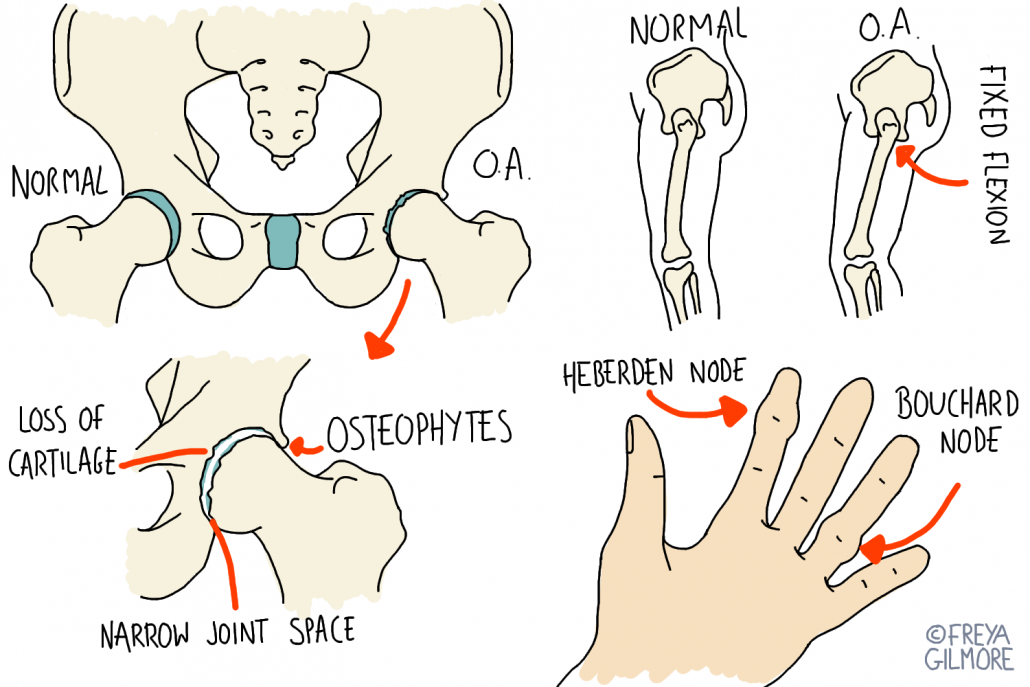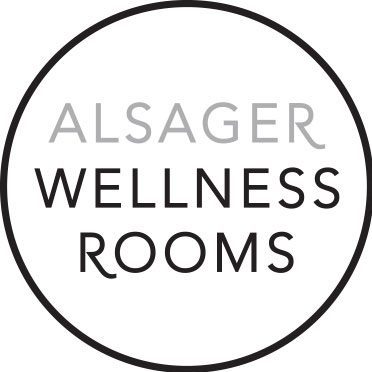If you’re suffering from osteoarthritis in your hip or knee, your osteopath can help.

Osteoarthritis (OA) is the “wear and tear” form of arthritis. Sometimes we talk about “wear, tear, and repair” to reference the body’s ability to heal from arthritis to some extent. A diagnosis of OA does not mean you’re stuck getting worse and worse until you can have a joint replacement.
Some people will still need surgery, but if you seek treatment early enough, you might be able to avoid or at least postpone it. Joint replacements are getting more advanced all the time, but they still have a limited life expectancy themselves. If you can delay surgery for a few years, you might be able to avoid replacing the replacement further down the line.
Osteoarthritis Basics
OA initially affects the cartilage of a joint. Cartilage doesn’t have a great blood supply, so it relies on movement through the joint to pump waste out and bring nutrients in. When movement is lost to any degree, some cartilage will suffer. It becomes rough, and the layer of tissue around the joint becomes inflamed. The more the arthritis progresses, the more restricted and painful the joint becomes. However, improving the movement still brings nutrients in and helps flush out waste, allowing some degree of healing, or at least slowing of progression
Knee Osteoarthritis
OA can affect the main hinge joint of the knee, or the joint at the back of the knee cap. Less commonly, it can also affect the small joint on the outside of the knee, where the tibia and fibula connect.
Even healthy knees sound or feel crunchy, but this will be more apparent in an arthritic knee. Bending through the knee may also become painful, or feel like it’s going to catch or give way. You may find that you’re avoiding bending or straightening your knee all the way. This is a sign that the joint needs some help, as at this point the body will adapt to the limited movement, causing changes elsewhere.
Hip Osteoarthritis
The body can adapt well to hip OA in the early stages, meaning there might not be any symptoms until the process is relatively advanced. The first movement lost to hip arthritis is usually extension (taking your leg back). To compensate, you might subconsciously lean forwards a bit or start taking shorter strides. These are the first signs of developing a stereotypical elderly shuffle and posture. Getting treatment at this point may mean you are able to fully restore your original posture.
Alternatively, allowing the compensation to continue will lead to more changes. As you bend forward further to ease the hip, the back and neck have to work harder to keep you somewhat upright. As arthritis is typically the result of overuse or misuse of a joint, this pattern encourages arthritis to develop elsewhere too.
Treatment
Osteopathy aims to improve both the health of the joint, and break the cycle by correcting compensatory patterns. Because of the role of the pumping action in cartilage health, we can make quick changes by performing these movements for you in clinic. Not only does this give the cartilage a better environment, but it also shows the brain that the movement is safe. This in turn makes it easier for you to continue these movements in everyday life.
When a joint becomes arthritic, the muscles around it contract to try and protect it. Unfortunately, this only serves to restrict movement further. If we can relax the muscle while simultaneously improving the joint itself, you’ll be back in a position where normal movements can help to heal the joint. Treating both the arthritis and the muscle helps to break the cycle.
We also want to look at the patterns that have developed in response to your OA. If we can spot emerging problems before they become symptomatic, we may be able to prevent their involvement at all.
Book an appointment now to get your arthritis under control.

